Get PeakVisor App
Sign In
Search by GPS coordinates
- Latitude
- ° ' ''
- Longitude
- ° ' ''
- Units of Length

Yes
Cancel
Share ×

Scan the QR code and open PeakVisor on your phone
❤ Wishlist ×
Choose
Delete
On the southern tip of India is the state of Tamil Nadu, India’s 10th largest state by area and 6th by population. With extensive archaeological, political, and cultural history, as well as a dynamic landscaape of mountains, plains, forests, and coastlines, Tamil Nadu boasts three UNESCO World Heritage sites and is home to one of the oldest surviving languages in the world, Tamil.
The state is also home to over 1,380 named mountains, primarily of the Western and Eastern Ghats that make up its borders. Of these mountains, Mannā Malai is the highest, at 2,656m/8,714ft above sea level, though its most prominent mountain is Doddabetta, at 2,637m/8,651m above sea level, but with 2,254m/7,395ft in prominence.
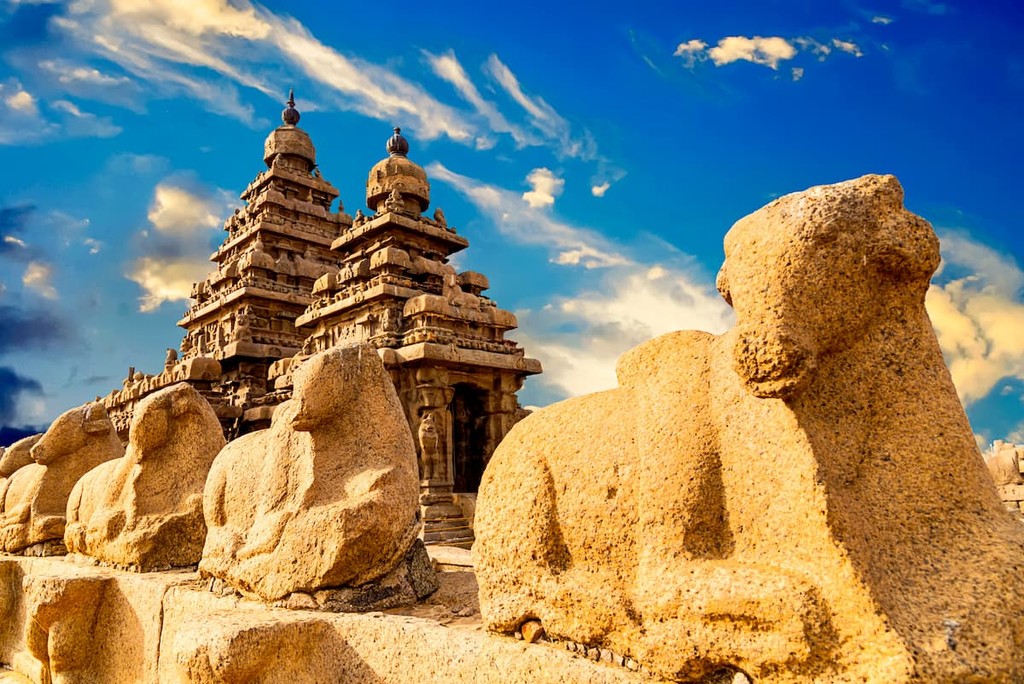
Tamil Nadu is the southernmost state of India, comparable only to its western neighbor, Kerala, with whom it shares the southern tip of the Indian subcontinent with. The border between the two is entirely demarcated by the Western Ghats, particularly the Nilgiri Mountains in the northwest, and the Meghamalai (or High Wavy Mountains) a bit further south.
The Nilgiri Mountains also demarcate part of Tamil Nadu’s border with Karnataka in the northwest, and are where the aforementioned Western Ghats meet with the Eastern Ghats, which bound the border with the state of Andhra Pradesh.
In the east, Tamil Nadu meets the Bay of Bengal. Along that eastern coast is the small union territory of Puducherry (or Pondicherry), which is enclaved within Tamil Nadu. On the tip of the southern coast, the town of Kanyakumari marks the confluence of the Bay of Bengal, the Arabian sea, and the Indian Ocean. The long stretch of coast from the east to the south gives Tamil Nadu the third-longest coastline in India, at 906.9km/563.5mi.
Lush, hilly terrain makes up the parts of Tamil Nadu most affected by the bordering mountains, namely the west, south, and northwest, while eastern Tamil Nadu is more characterized by fertile coastal plains, and the northern landscape a mixture of both. In central and south-central Tamil Nadu, the landscape is drier from receiving less precipitation, resulting in vast arid plains.

The most fertile part of Tamil Nadu is the Kaveri Delta on the eastern coast, Kaveri being a river that flows from Karnataka into Tamil Nadu. Kaveri is the largest river in Tamil Nadu, bisecting the state into two, and is incredibly important for its water supply, agriculture, and for its cultural significance as one of the seven sacred rivers of India.
Tamil Nadu is generally warm, varying between a dry sub-humid to a semi-arid climate, and is heavily dependent on seasonal monsoon rains to supply its water resources, otherwise facing drought and water scarcity. These monsoons occur in two main periods: from June to September is the South west monsoon, though this is weakened by the Western Ghats, and from October to December is the North east monsoon.
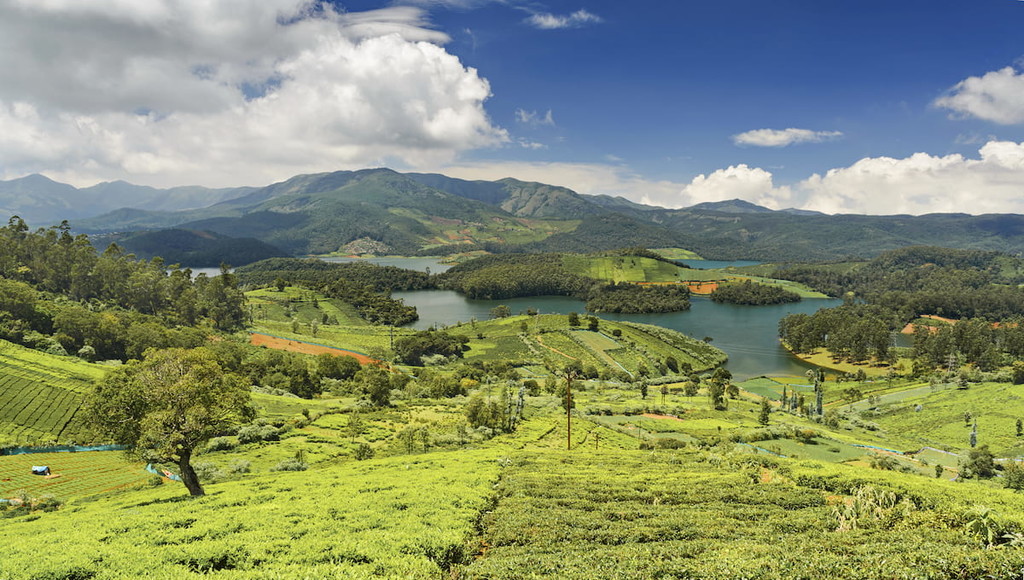
Administratively, Tamil Nadu is split into 38 districts, with its capital city of Chennai having its own district on the northern coast, the smallest in the state. Chennai is, by far, the most populous city in Tamil Nadu, with a total metropolitan population of almost 9,000,000 people, although the city proper has around 5,000,000 people.
With Tamil Nadu functionally surrounded by mountains, it is no surprise that the geological makeup of the state is rich and dynamic. Generally speaking, the Western Ghats and Deccan Plateau of which the Ghats are formed dominate the landscape, with the Ghats primarily made of basalt, though charnockite, metamorphic and granite gneiss, iron ore, leptynite, and khondalite, among others, have also been found.
The Deccan Plateau itself is likewise primarily basalt, as well as granite and mineral ores that vary depending on the region.
In further detail, Tamil Nadu consists of many formations of many types of rock from many eras. Near the center is the Archean Sathyamangalam Group, made of different types of quartzite. Also Archean in age is the Bhavani Gneissic Complex, west of Sathyamangalam, consisting mainly of well-mined gneisses. Other Archean formations contain graphite, granite, limestone, schist, gabbro, dunite, chromite, and aforementioned gneiss and quartzite.
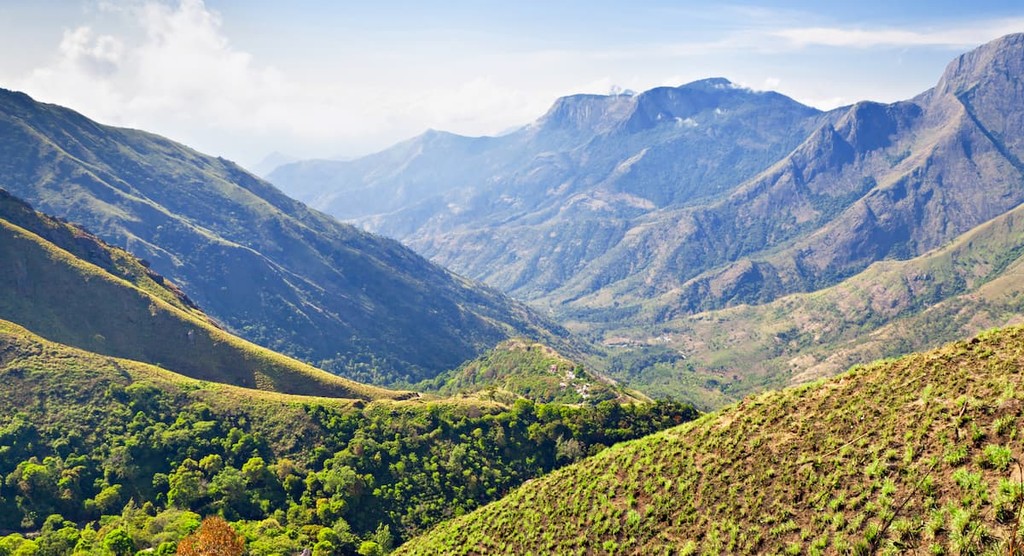
Large swaths of Proterozoic granite can be found around the Moyar-Bhavani and Palghat-Cauvery tectonic zones, though granite is seemingly common throughout eras and locations. Migmatitic complexes have formed in hills flanking the Ghats, occasionally studded by dunite, pyroxenite, and peridotite.
Western Tamil Nadu, near the Western Ghats, contains quantities of alkaline rocks and carbonatites in about seven specific formations, marked also by syenite, pyroxenite, dunite, gabbro, and anorthosite.
Paleozoic and Mesozoic fossils have been found in various basins along the coast, often within layers of silt, sandstone, and limestone. Also along the coast is the Teri dune complex in the southeast, consisting of Quaternary sediments and marine deposits of aeolianite. These are marked by their unique red sane and silt dunes, with its ilmenite-rich red soil estimated to be from the Pleistocene, derived from garnet.
Though the ecosystems of Tamil Nadu may vary greatly depending on elevation and location, generally speaking, the state is one of great biodiversity and rich ecoregions, from dry plains to green hills to fertile coast and everything in between.
Around 2,000 animal species claim Tamil Nadu as home, including almost 600 bird species. As for fauna, almost 17,700 species of flowering plants can be found, including 533 endemic species, alongside hundreds of species of gymnosperm, pteridophyte, and bryophyte plants.
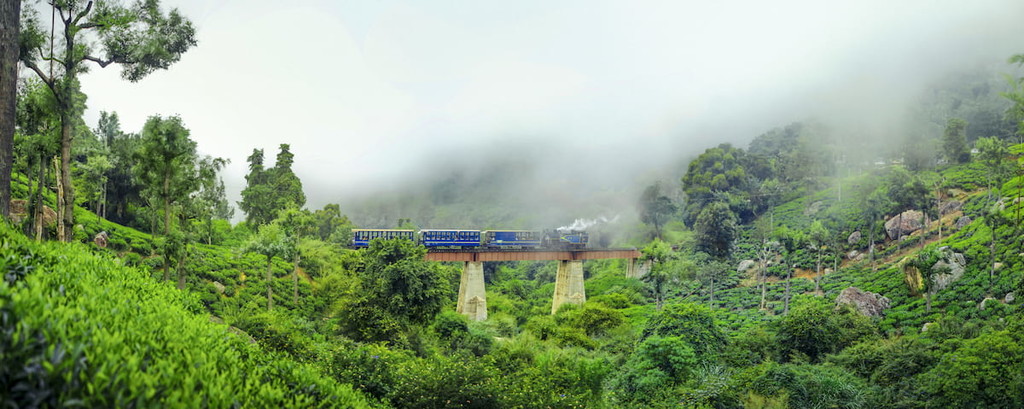
In the South Western Ghats montane rain forests, located in western Tamil Nadu, evergreen forests thrive under cool and moist conditions, with Cullenia exarillata, Ceylon ironwood, Palaquium, Gluta travancorica, and Nageia wallichiana a sample of the characteristic canopy trees, with orchids common beneath them.
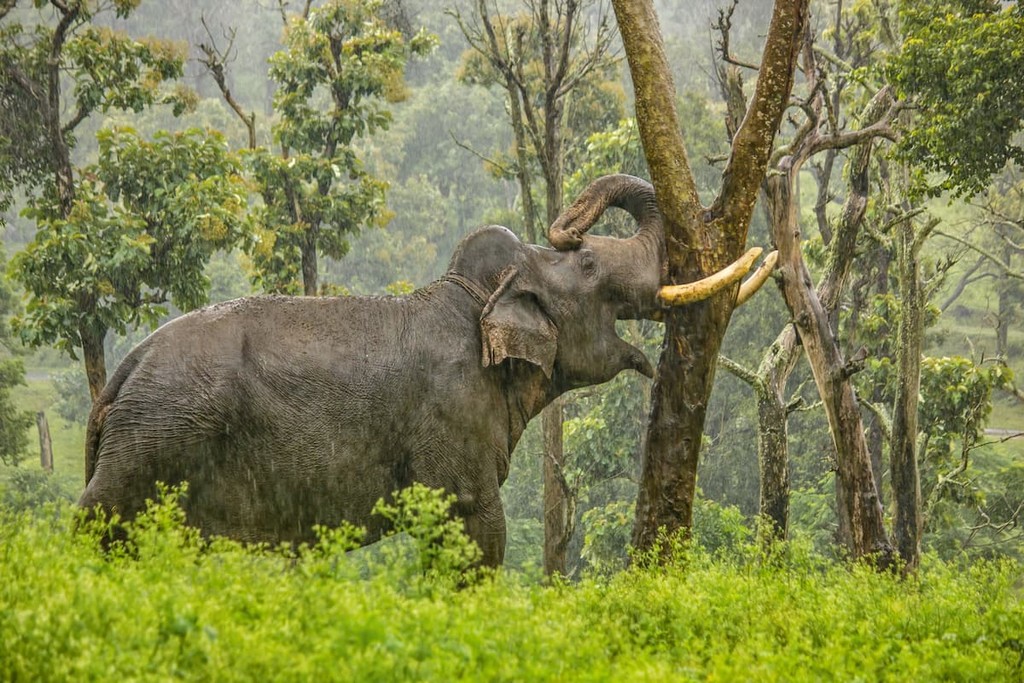
This ecoregion also contains shola grasslands, stunted forests of smaller trees like the Schefflera racemosa or northern olive, with dense shrubbery below. In these grasslands, particularly around the Nilgiri hills, the endemic Nilgiri langur and Nilgiri tahr can be found.
These forests are perhaps more famous for their elephant populations, the largest in all of India, as well as other significant mammals like tigers, leopards, dholes, gaurs, and sloth bears. They also contain almost 20% of India’s 484 species of reptile, including 8 endemic genera, and 50% of India’s 206 amphibian species, including 6 endemic genera. Examples of both include the Dravidogecko, Salea, cat skink, Melanophidium, night frog, and Uraeotyphlus.
In the shadow of the Western Ghats, comprising much of central and southern Tamil Nadu, is the three-storied South Deccan Plateau dry deciduous forests, where sal, teak, sandalwood, Ceylon satinwood, Indian laburnum, and Bombay ebony, among many others, can be found.
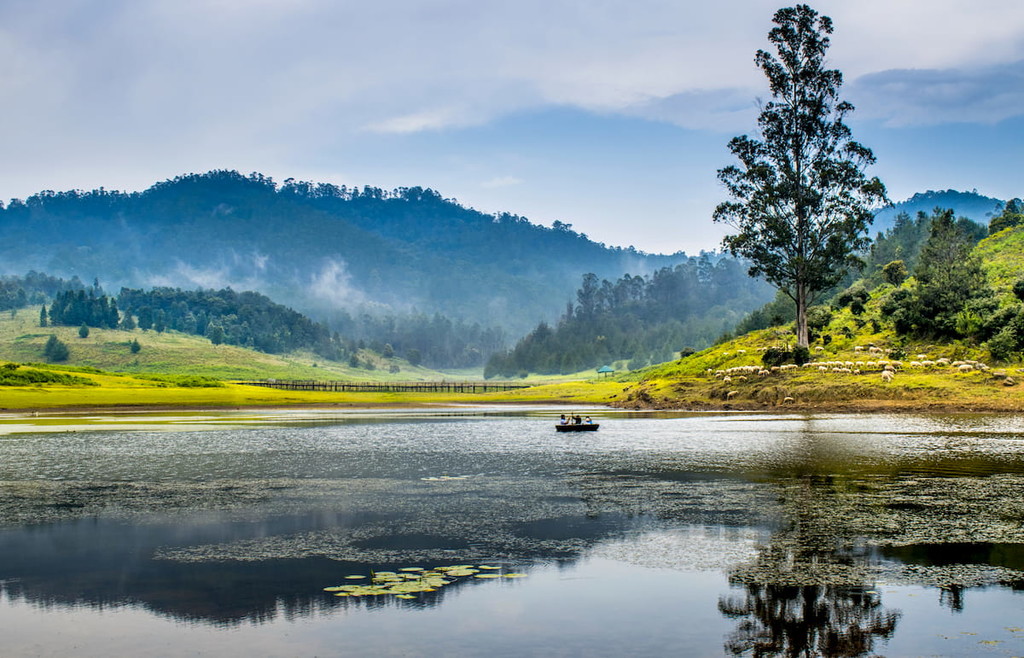
Around 75 species of mammal reside in these forests, many of which are endangered due to human encroachment and resource exploitation. The Indian elephant, sloth bear, gaur, grizzled giant squirrel, great Indian bustard, lesser florican, and chousingha are all threatened, with Salim Ali’s fruit bat, the rufous babbler, and the yellow-throated bulbul notable species either endangered or near-extinct.
As the dry deciduous forests expand northward and eastward, the landscape turns to the xeric shrubland of the Deccan thorn scrub forests, which has likewise been heavily impacted by human development.
The predominant vegetation of the Tamil Nadu scrub forests is the umbrella thorn, though various grasses, medicinal plants, and other characteristic shrubs can be found. Most of the biodiversity of the scrub forests is in fact found in their birds, with around 350 species, such as the lesser florican and great Indian bustard.
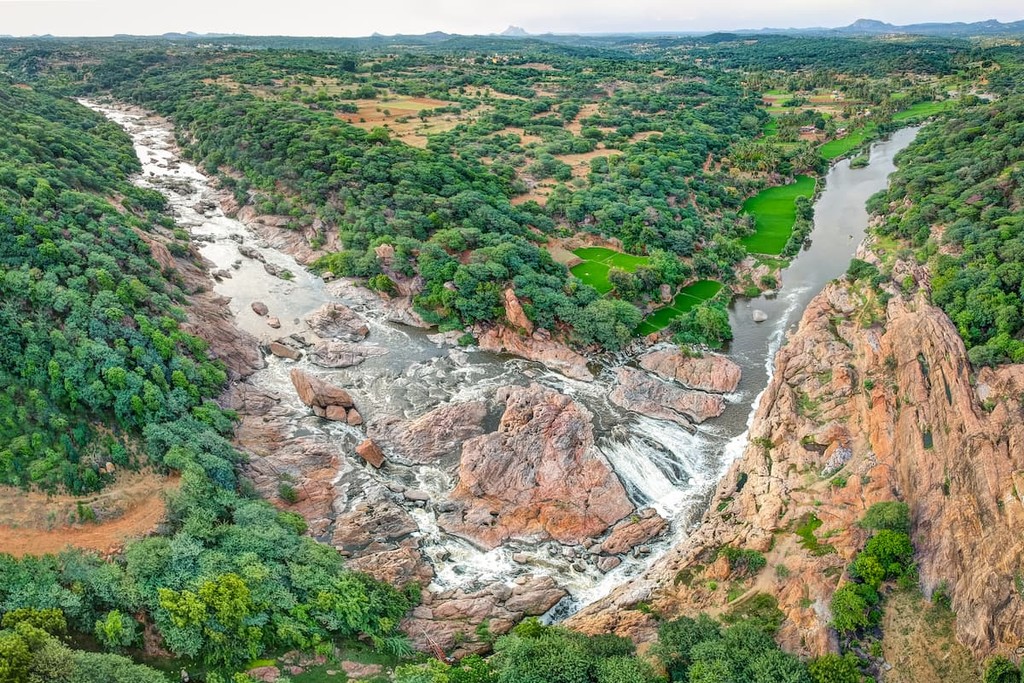
Otherwise, blackbucks, Nilgai antelope, Indian roundleaf bats, tigers, gaurs, dholes, chousingha, and sloth bears are notable mammals of the area, and the Indian star tortoise, Indian chameleon, and Bengal monitor notable reptiles.
On the eastern coast are tropical and subtropical East Deccan dry evergreen forests, which have been densely settled and urbanized overtime. Around 2% of the ecoregion, which also includes the southern coast of Andhra Pradesh, is considered protected, with another 6% still forested but unprotected.
Nonetheless, animals like the dhole, sloth bear, and Indian spotted chevrotain can be seen among the remaining wilderness. Major plant species include the Ceylon ebony, strychnine tree, Manilkara hexandra, Mimusops elengi, Drypetes sepiaria, and small communities of Sal forest.
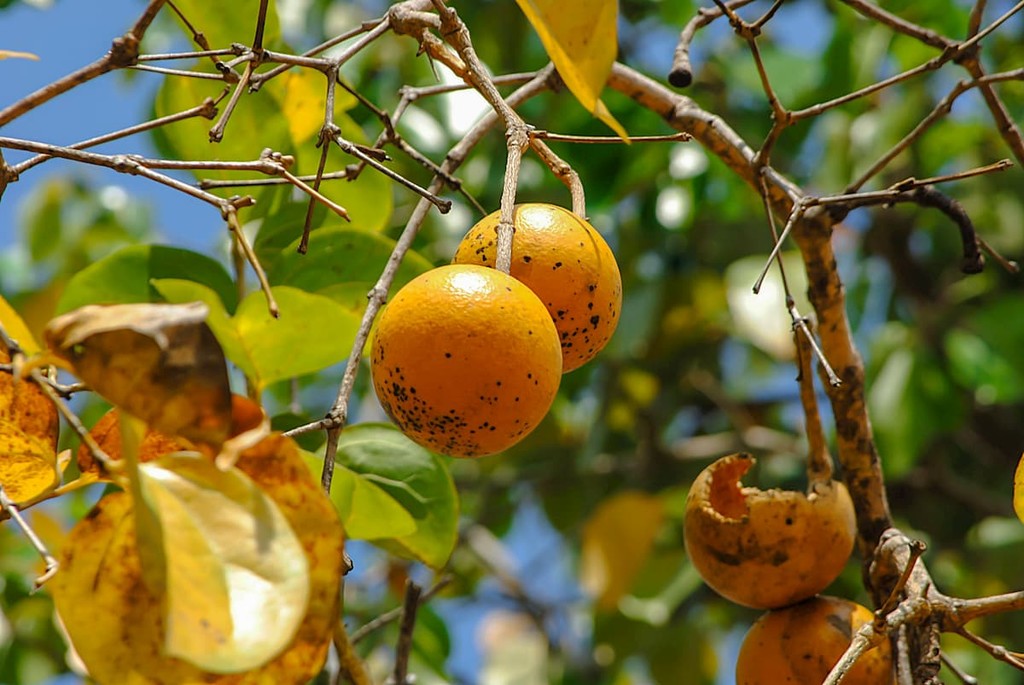
The region is also home to some wetlands of note, namely Kaliveli Lake and Pulicat Lake, which are important locations for migratory birds and the fragile wetland ecosystem.
Outside the evergreen forests, the coast of Tamil Nadu contains many rich and diverse marine ecosystems, seen well in the Gulf of Mannar Marine National Park. Dugongs as well as many cetaceans can be seen in the park, and clown fish, parrot fish, butterfly fish, squirrel fish, and snappers are particularly abundant.
The Gulf of Mannar is a microcosm of the various ecosystems scattered along the coast, including estuaries, mudflats, mangroves, coral reefs, salt marshes, and seagrasses.
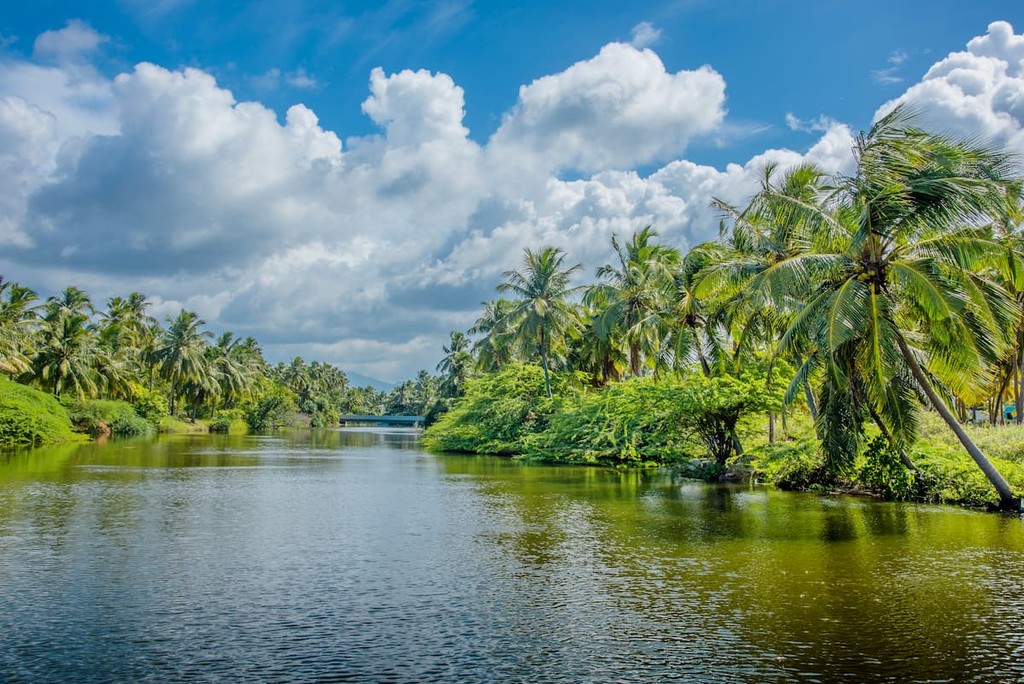
The history of human presence in Tamil Nadu is one of the oldest histories of continuous habitation on the Indian subcontinent, with archaeological finds that suggest the existence of pre-homo sapiens species and, later, intensive Neolithic settlement. Furthermore, one of the first artifacts showing script from an Indus Valley language was found in Tamil Nadu, dating to the early 2nd millennium BC.
For hundreds of years, three main kingdoms occupied ancient Tamil, the Pandyans, Cholas, and Cheras. These three kingdoms are mentioned in the Pillars of Ashoka, which were likely inscribed around the 200s BC, but written records from their ancient kingdoms are scarce.
From 300 BC to 300 AD (the exact dates seem uncertain, but it seems to have occurred around this time period) was the Sangam period, named for the Sangam scholars who gathered in the city of Madurai around this time. It is suggested, however, that the ancient city of Alagankulam, now a small village, was one of the most significant centers of trade.

During this time, parts of modern Tamil Nadu would come under the control of various empires. The Mauryas, for example, dominated the Deccan Plateau during the 3rd century BC, followed by the Satavahana dynasty a century later. The Sangam period saw a mixture and coexistence of Buddhism, Jainism, Hinduism, and other contemporary beliefs in various parts of southern India.
After the 4th century AD, the Pallava dynasty began to take control of sections of South India, continuing and expanding the tradition of Tamil architecture and temple construction that would persevere afterward as well. In the 800s, the Pallavas would be replaced by the modern Chola dynasty, and in the 1200s, the Chola dynasty by the modern Pandyan dynasty, during which time there was much trade occurring in southern India with nearby empires.
As Muslim empires continued to push into southern India in the 14th century, the Hindu empire of Vijayanagara was established, which would conquer all of Tamil by the latter half of the century. The empire would be destroyed by an allied force of Deccan sultanates in 1565, inspiring many local rulers to acquire further independence for their lands.
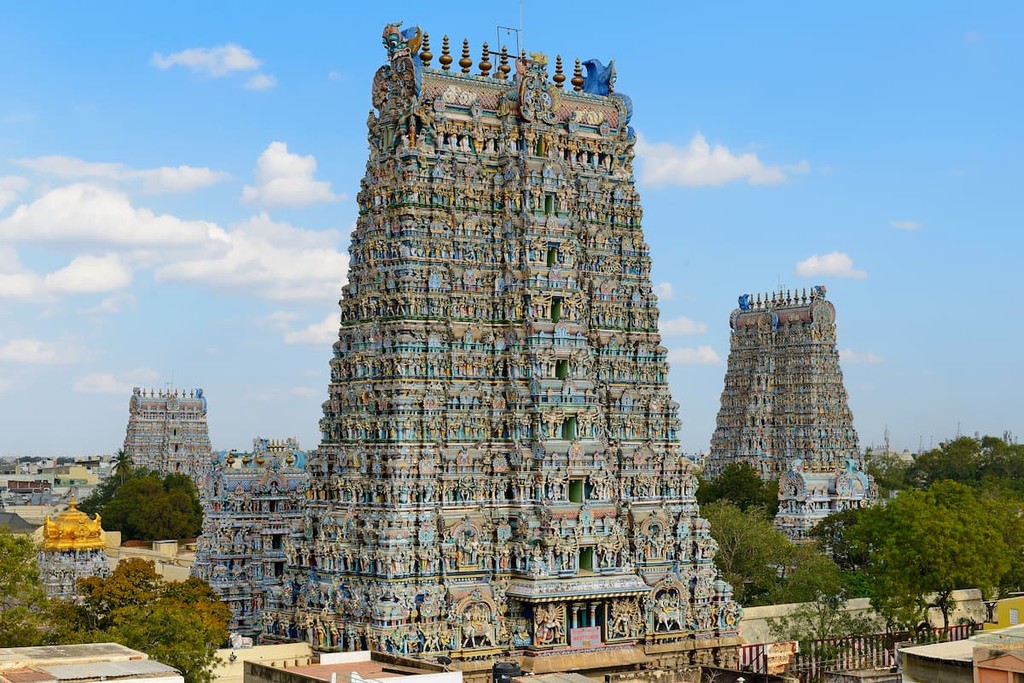
This created a powder keg of struggles in Tamil Nadu between these minor rules, and in 1688, the Golconda Sultanate took advantage of the chaos to expand into Tamil; at the same time, the Golconda Sultanate was newly controlled by the Mughals, who occupied their kingdom.
In the same century, European arrival and contact with southern India led to the foundation of trade centers along the coast, with the British East India Company founding a settlement in what is now Chennai, then known as Madras. Tamil Nadu became a battleground for British and French power struggles, especially during the Seven Years’ War, with Britain typically victorious.
The British were likewise successful in acquiring further territory in Tamil Nadu, though certainly not without conflict between them and the local peoples, resulting in rebellions like the First and Second Polygar War that ultimately ended with British victory and thus further British acquisition of land. This land was consolidated into the Madras Presidency, a British administrative subdivision in much of southern India.
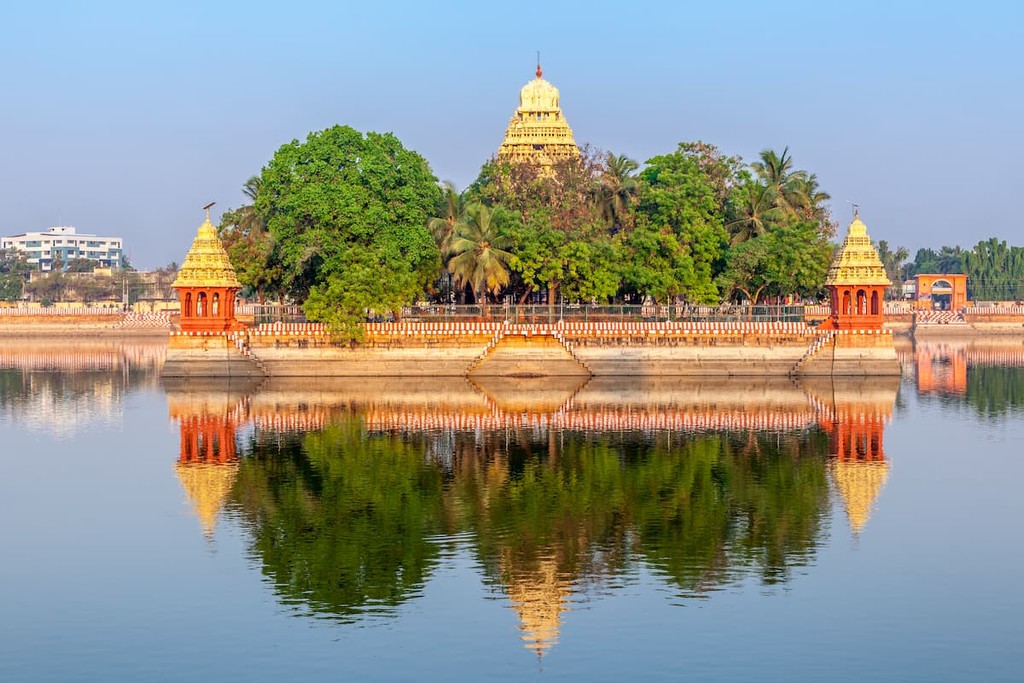
By the 1800s, Tamil Nadu as a whole was under British control, though, again, not without pushback and revolt. Administrative failure combined with drought resulted in two major famines, from 1876-78 and 1896-97, during which time many people migrated out of Tamil Nadu, now part of the massive Tamil diaspora.
After India’s independence in 1947, Madras became the Madras State, which was then renamed Tamil Nadu in 1969.
From green plains to green hills to green forests, Tamil Nadu is home to a wealth of lush and beautiful hiking and trekking locations. It is important to note that some of these locations, either for reasons of safety or conservation, may require tour/guide booking and permission from local authorities in advance.
In the Nilgiri Hills is Mudumalai National Park, part of a greater area that has been under consideration as a UNESCO World Heritage Site. Mudumalai is one of the locations where the endangered Bengal tiger can be found, as well as other endangered species such as the Indian elephant, Indian leopard, and gaur.
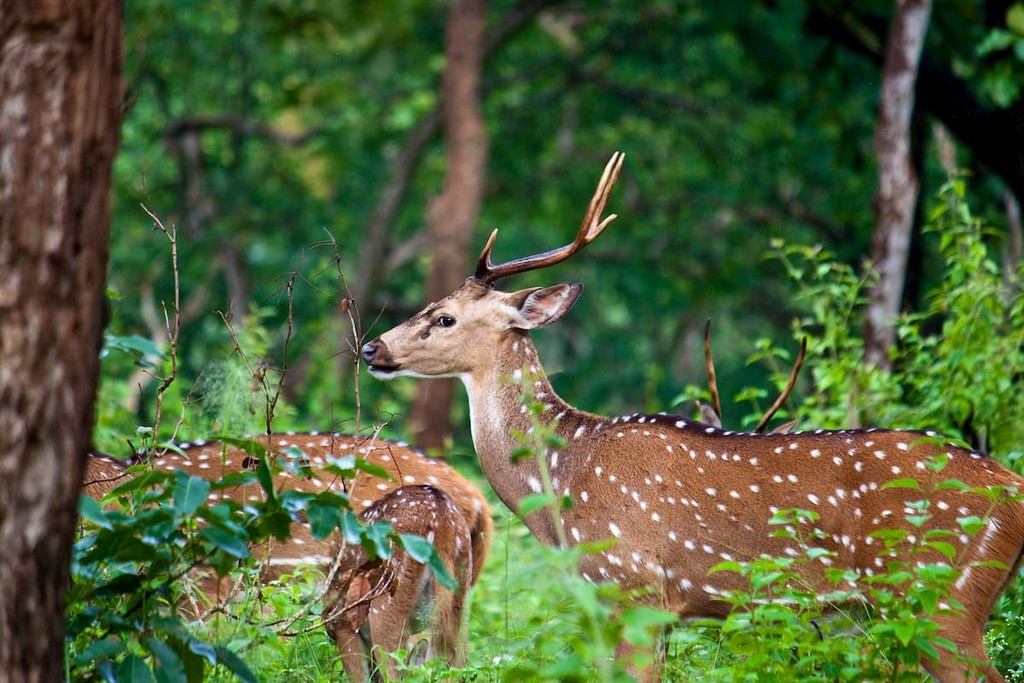
While parts of the park are limited to vehicle safaris, there are areas in and around the park with nature trails and trekking paths, with picturesque paths through the forest and under the mountains that make the region so heralded.
Similar wildlife can be seen just south of Mudumalai, at Mukurthi National Park, although the main attraction is the keystone species of the Nilgiri tahr. Casual commercial tourism is prohibited, as hiking and trekking adventures must be organized with permission from park officials.
Further south, likewise along the Western Ghats and thus with similar mountain and jungle ecosystems, is the Anamalai Tiger Reserve. The park contains a tourist complex with options for housing and opportunities for shopping and education, and the park is open to a variety of activities such as trekking, birdwatching, and vehicle safaris. The general Anamalai Hills region around the park is also a notable destination for hiking.

Palani Hills Wildlife Sanctuary, in the easternmost portion of the Western Ghats, houses many endemic flora and fauna, prominent mountain peaks like Vandaravu and Vembadi, and stunning waterfalls. There are many hiking paths listed in both the sanctuary and the Kodaikanal area, which is a popular site for hiking in general, though certain treks deep in the sanctuary’s jungle may require permission from the Forest Department.
Guindy National Park is located within the city of Chennai, a far distance from the Western Ghats. The park is dedicated to conservation and education, and access into the heart of the reserve is only allowed when accompanied by a forest ranger.
The Jawadhu Hills are a popular trekking location in Tamil Nadu, with scenic hikes through the hills at altitudes that tower over the surrounding landscape. A variety of treks can be found here at a variety of difficulties, such as the 37km/23mi Jawadhu Hills Ultra trek.
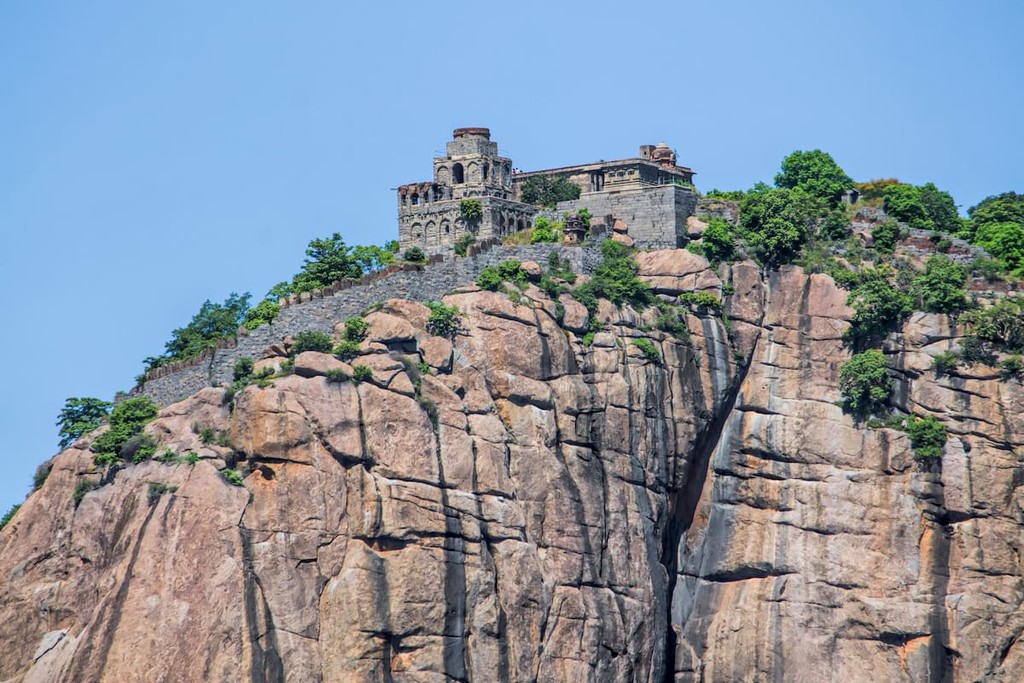
Climbing up the thousand year-old Gingee Fort makes for an ideal day trip out of Chennai, marked by rich history and beautiful views. The Krishnagiri Fort also has a trek to the top, which can get rather steep and tricky at points, but boasts an amazing architectural feat at the end.
Another popular trek is the Dolphin’s Nose Trek out of Kodaikanal, considered a fairly easy trek with two main viewpoints and a more challenging extension that leads to Vattakanal. The sacred mountain of Parvathamalai, housing a Shiva sanctuary, provides a trek around three hours long up its steep and rocky slopes.
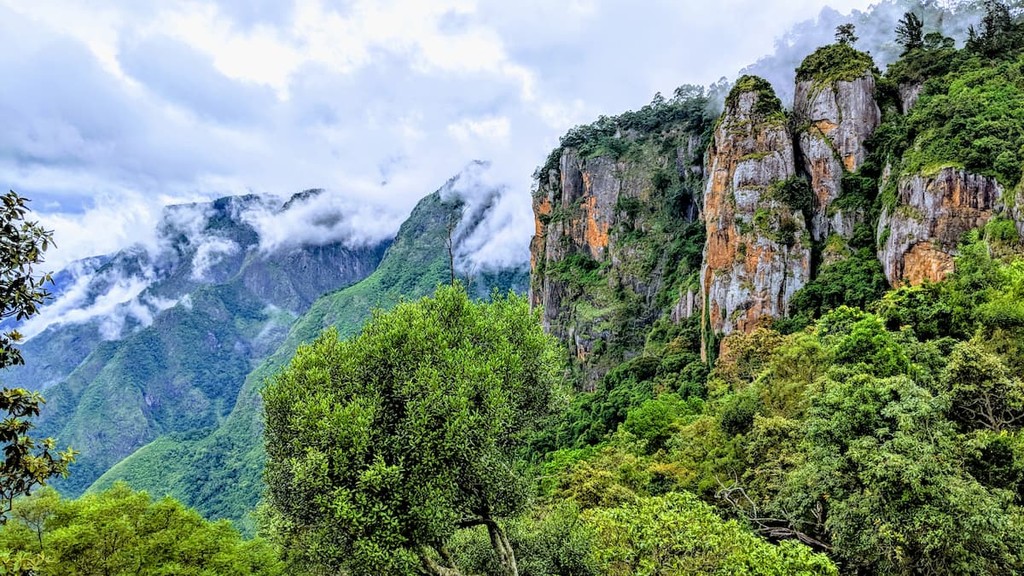
The Nilgiri Hills contain not just a national park, but a wealth of natural attractions and trails that make a particular hotspot for hiking, especially in the hill station of Ooty. Other popular hiking locations in Tamil Nadu include:
Tamil Nadu is home to several pristine and enchanting waterfalls, some of which can be found in the aforementioned national parks, but others that are found elsewhere in the wild. Some notable waterfalls include:
Many of Tamil Nadu’s natural wonders are located within reasonable distances of its major cities, such as Chennai and Coimbatore. The cities themselves, however, are also popular destinations for exploration and recreation in Tamil Nadu, owing to the fascinating traditional cultures and cosmopolitan nature of the state.
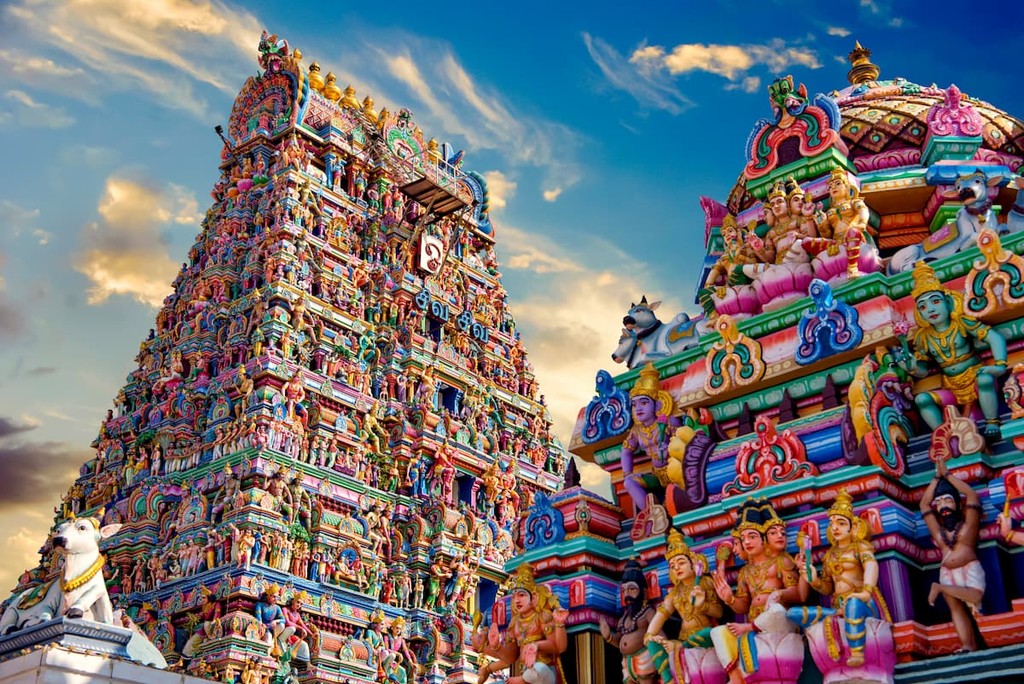
Along Tamil Nadu’s eastern coast is the massive metropolis and capital city of Chennai, famous as one of the hubs of culture, commerce, and education in southern India. It is one of the most popular tourist destinations in India, and thus has well-maintained tourist infrastructure, with many hotels and transportation options.
Chennai International Airport, terminals for the Southern Railway, and the Chennai Mofussil Bus Terminus allow for transport in and out of the city, while the Chennai Metro and suburban railway network contribute to ease of movement within the city.
The streets of Chennai boast buildings from all sorts of styles and centuries, with the oldest being the Dravidian-style temples of Kapaleeshwarar and Parthasary dated to the 7th and 8th centuries AD. Over time, Indo-Saracenic, Gothic revival, art deco, and modernism all left their touch on the city, alongside a variety of temples, mosques, and churches, resulting in aesthetically and culturally diverse neighborhoods rich in history.
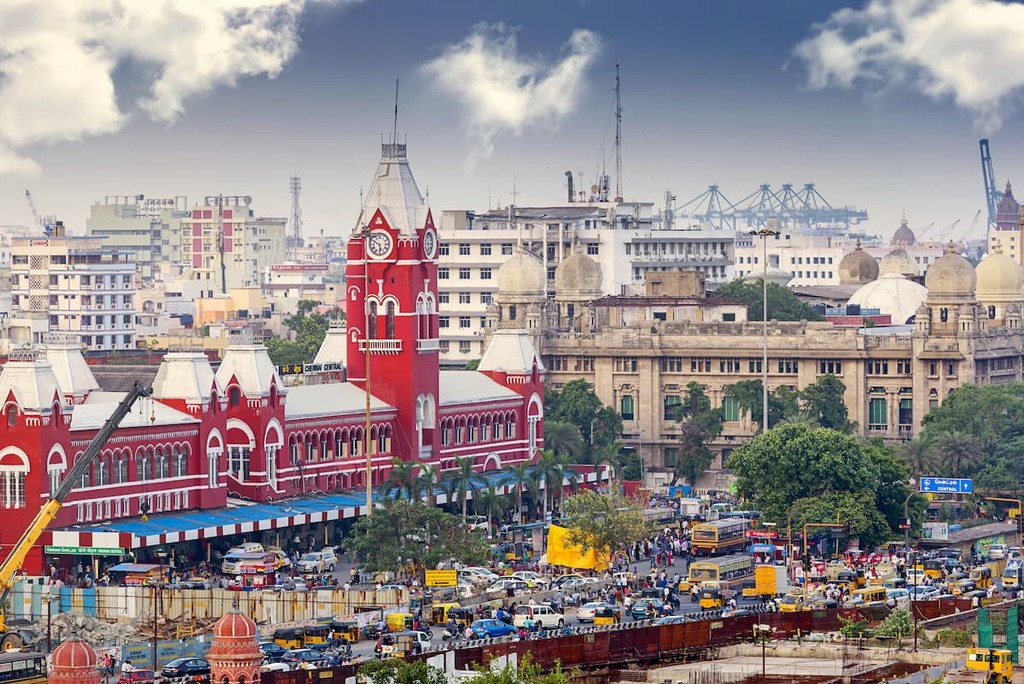
Beaches like Elliot’s Beach and Marina Beach, museums like the Birla Planetarium and the Government Museum, monuments like Valluvar Kottam and Vivekanandar Illam, shopping centers like T. Nagar and George Town, and art centers like Cholamandalam and Kalakshetra are a mere sample of the recreational and cultural destinations within the city, and local natural attractions like Adyar Eco Park and Chetpet Lake should be noted as well.
The second largest city in Tamil Nadu with around 2,000,000 people in its metro area, Coimbatore is cosmopolitan yet nonetheless traditional city surrounded by the Western Ghats. Coimbatore is known as a hub of motorsports in India, as well as a hub of industry, with jewelry and textiles of particular historical importance.
Temples, mosques, and churches contribute to a rich and ancient architectural history, a sharp contrast to the highrises and commercial centers found elsewhere in the city. Notable examples include the Perur Pateeswarar Temple, Kottaimedu mosque, and CSI All Souls Church. Religious and cultural festivals are celebrated often, as well as the city’s own music festival, epitomizing the visual and performing arts legacy of the city.

Gandhi Park and the Botanical Garden preserve lush land and diverse flora within the city, with the Noyyal river, Sengupathi and Vaideki Falls, and Valankulam Lake other prime locations for witnessing local nature in and around the city. Museums like the Ancient Industrial Artifacts Museum and Kasthuri Sreenivasan Art Gallery, meanwhile, preserve the archaeological and artistic history of the city.
Coimbatore has its own international airport and a major railway station, the Coimbatore Junction, which connects to the Southern Railway and provides access to the rest of southern India, though there are other major and minor railways around the city as well. The city can also be accessed through India’s highway system, with buses that reach other notable cities in Tamil Nadu and Kerala, and travel within the city is supported by a bus system as well.
Explore Tamil Nadu with the PeakVisor 3D Map and identify its summits.








